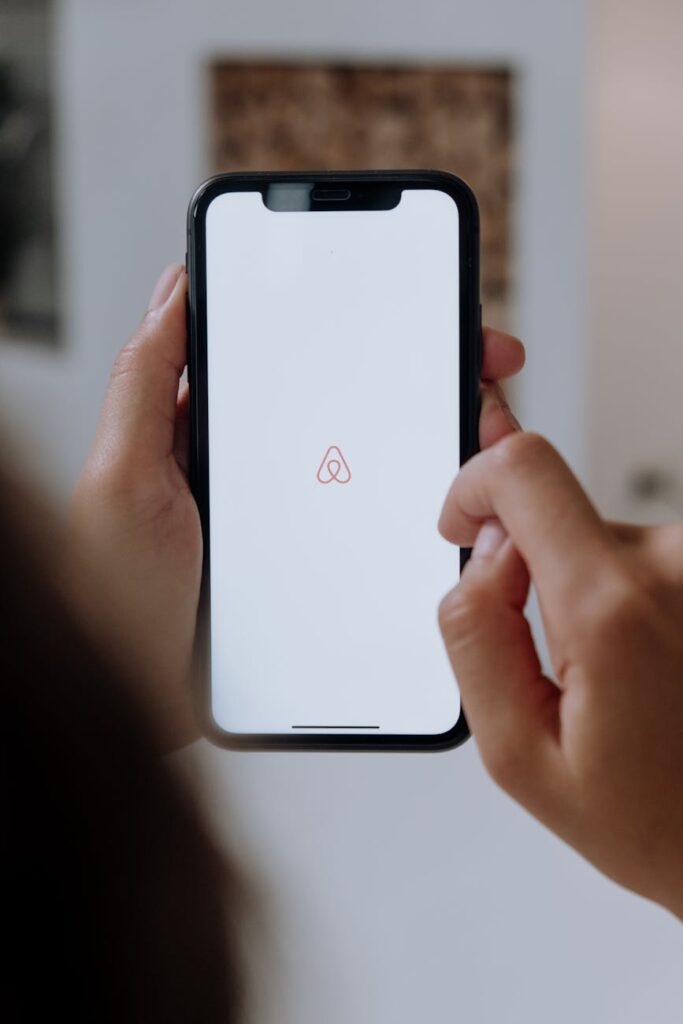Stop Leaving Your Crypto’s Front Door Wide Open
Let’s have a real talk. You’ve spent hours researching projects, you’ve meticulously timed your buys, and you’re excited about the future of your crypto portfolio. But have you spent even ten minutes securing it properly? For far too many people, the answer is a hard no. They use a decent password and think they’re safe. That’s like locking your front door but leaving the key under the mat for everyone to see. In the high-stakes world of digital assets, that’s not just risky; it’s reckless. The single most powerful, and surprisingly simple, step you can take right now is enabling Two-Factor Authentication (2FA) on every single platform that holds your crypto. It’s not an option. It’s a necessity.
Key Takeaways:
- A strong password alone is not enough to protect your crypto assets from sophisticated attacks.
- Two-Factor Authentication (2FA) adds a critical second layer of security, requiring a separate code from your device to log in.
- Authenticator apps (like Google Authenticator) and hardware keys are vastly more secure than SMS-based 2FA, which is vulnerable to SIM-swapping attacks.
- Setting up 2FA is a quick process that dramatically reduces your risk of being hacked and losing your funds.
- Always back up your 2FA recovery codes in a secure, offline location. Losing them can mean losing access to your account forever.
So, What Exactly Is This 2FA Thing?
Think of it like the security for a bank vault. To get in, you don’t just need one key. You need two different keys, and maybe one of them is held by a different person. That’s the core idea. Two-Factor Authentication is a security process that requires two distinct forms of identification to grant access. It’s a way of double-checking that you are who you say you are.
The first factor is almost always something you know: your password. It’s the standard key to the lock.
The second factor is something you have: usually, a temporary, one-time code generated on a device you physically possess, like your smartphone or a special USB key. So, even if a thief manages to steal your password (which is easier than you think), they still can’t get into your account. Why? Because they don’t have your phone. They’re stuck outside, unable to provide that second piece of the puzzle.

Your Password is Weaker Than You Think
You might be thinking, “My password is super strong! It’s 20 characters long with numbers, symbols, and the name of my first pet spelled backward.” That’s great, but it’s often not enough. Here’s why:
- Data Breaches: Massive company databases are hacked all the time. If you’ve ever reused your password (and let’s be honest, most of us have), your login details for one site could be stolen from a completely different, less secure site and then used to try and access your crypto exchange. Hackers run automated scripts that test these stolen credentials on thousands of sites.
- Phishing Scams: You get a convincing email that looks like it’s from your exchange, asking you to log in to verify your account. You click the link, enter your details on a fake website, and boom—they have your password. These scams are getting incredibly sophisticated.
- Keyloggers & Malware: Malicious software on your computer can record every keystroke you make, including your passwords, and send them directly to a hacker. You might not even know your machine is infected.
A password is a single point of failure. 2FA turns a single lock into a double-bolted, reinforced steel door. It’s a game-changer.
The Different Flavors of Two-Factor Authentication (And Which to Choose)
Not all 2FA is created equal. Understanding the different types is crucial for making the smartest choice for your crypto security. They generally fall into three categories, ranging from good to best.
The “Okay, But Vulnerable” Method: SMS/Text Message
This is the one most people are familiar with. You try to log in, and the service sends a 6-digit code to your phone via text message. You enter the code, and you’re in. Simple, right?
Pros: It’s incredibly easy to set up and use. Pretty much every service offers it. It’s way, way better than having no 2FA at all.
Cons: This method is highly vulnerable to a nasty attack called a “SIM swap.” A scammer can call your mobile provider, impersonate you, and convince the company to transfer your phone number to a new SIM card they control. Once they do that, they get your 2FA codes, reset your passwords, and drain your crypto accounts before you even know what happened. It’s a terrifyingly common tactic in the crypto space. Because of this, SMS 2FA should be your last resort.
The “Much Better” Method: Authenticator Apps
This is where real security begins. Instead of relying on the insecure text message network, you use a dedicated app on your smartphone. Popular choices include Google Authenticator, Authy, or Microsoft Authenticator.
Here’s how it works: When you set it up, you scan a QR code on the exchange’s website. The app then generates a new 6-digit code every 30-60 seconds. This code is generated entirely on your device and is not transmitted over any network. To log in, you enter your password and then open the app to get the current code.
Pros: Immune to SIM-swapping. The codes are generated offline on your device, making it much more secure. Many apps, like Authy, also offer encrypted cloud backups, so you don’t lose access if you lose your phone.
Cons: If you lose the phone that has your authenticator app and you haven’t backed up your recovery keys, regaining access to your accounts can be a major headache. This is why backing up is not optional.
The “Fort Knox” Method: Hardware Security Keys
This is the gold standard. A hardware security key is a small physical device, often looking like a USB stick (like a YubiKey or Ledger Nano), that you use as your second factor.
To log in, you enter your password, and then the site prompts you to insert your hardware key into your computer’s USB port and tap a button on it. This action cryptographically verifies your presence and authenticates you. No codes to type, no apps to open.
Pros: The absolute highest level of security. It’s immune to phishing because the key only communicates with the legitimate website it was registered with. A hacker can’t trick you into using it on a fake site. It’s also immune to malware on your computer that might try to steal codes from an app.
Cons: They cost money (typically $20-$70). You also need to physically have the key with you to log in, which can be inconvenient. And, of course, you can lose it (which is why you should always set up a backup key!).
For 99% of crypto users, an authenticator app is the perfect balance of high security and user-friendliness. If you are holding a significant amount of assets, investing in a hardware key is a very wise decision.
How to Set Up 2FA on Your Crypto Accounts (A Quick Guide)
While the exact steps vary slightly between exchanges like Coinbase, Binance, or Kraken, the general process is almost always the same. Don’t put this off. Do it now.
- Find the Security Settings: Log in to your exchange account. Look for a section called “Security,” “Account,” or “Settings.”
- Locate the 2FA/MFA Option: Inside the security settings, you should see an option for “Two-Factor Authentication” or “Multi-Factor Authentication.” Click on it.
- Choose Your Method: You’ll likely be given the choice between SMS, Authenticator App, or Security Key. Choose Authenticator App.
- Scan the QR Code: The website will display a QR code. Open your authenticator app (e.g., Google Authenticator) on your phone and use it to scan this code. This links the app to your account.
- SAVE YOUR BACKUP CODE: This is the most important step. The website will show you a long string of letters and numbers or a series of “recovery words.” This is your manual backup key. Write it down on a piece of paper and store it in a secure physical location (like a safe). Do NOT store it as a screenshot or a text file on your computer. If you lose your phone, this code is your only way back in.
- Verify the Setup: To confirm everything is working, the website will ask you to enter the 6-digit code currently being displayed in your authenticator app. Enter it.
- You’re Done! Congratulations. Your account is now exponentially more secure. Now, go do this for every single other crypto account you have. And your email. And your bank. Everything.

Common Mistakes People Make With 2FA
Setting up 2FA is a huge step, but a few simple mistakes can undermine its effectiveness. Be sure to avoid these:
- Not Backing Up Recovery Codes: I’ve said it three times, so here’s a fourth. If you lose your phone and don’t have your backup code, you could be permanently locked out. The support process to regain access can take weeks or months, if it’s even possible. Treat that piece of paper with your code on it like a bar of gold.
- Using SMS 2FA When Better Options Exist: Don’t default to the easiest option. Take the extra two minutes to set up an authenticator app. The security benefits are immense.
- Only Protecting One Account: Hackers will find your weakest link. If your crypto exchange is secured but your primary email account isn’t, they can hack your email, use it to reset your exchange password, and bypass some security measures. Enable 2FA everywhere.
- Falling for 2FA Phishing: Scammers may try to trick you into giving them your 6-digit code. They might call you pretending to be from the exchange’s support team. Never, ever share your 2FA code with anyone. A legitimate company will never ask for it.
Conclusion: Your Crypto, Your Responsibility
In the decentralized world of cryptocurrency, the mantra is “be your own bank.” That’s incredibly empowering, but it also comes with immense responsibility. There is no FDIC insurance or friendly bank manager to call if your funds are stolen. Once they’re gone, they’re gone forever.
Implementing strong security isn’t just a recommendation; it’s a fundamental part of being a responsible crypto owner. A strong, unique password is the first step, but it’s incomplete. Enabling Two-Factor Authentication, preferably with an authenticator app or a hardware key, is the single most effective action you can take to protect your hard-earned assets from the vast majority of threats. It takes less than 10 minutes to set up, and it could save you from a lifetime of regret. So please, if you take one thing away from this article, let it be this: stop reading, go to your accounts, and enable 2FA right now.


